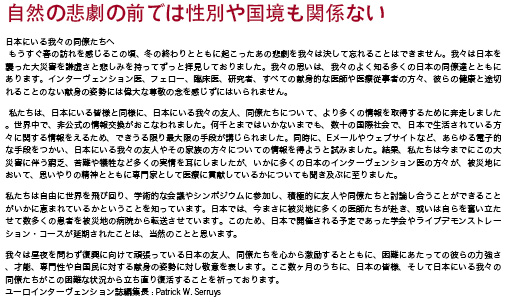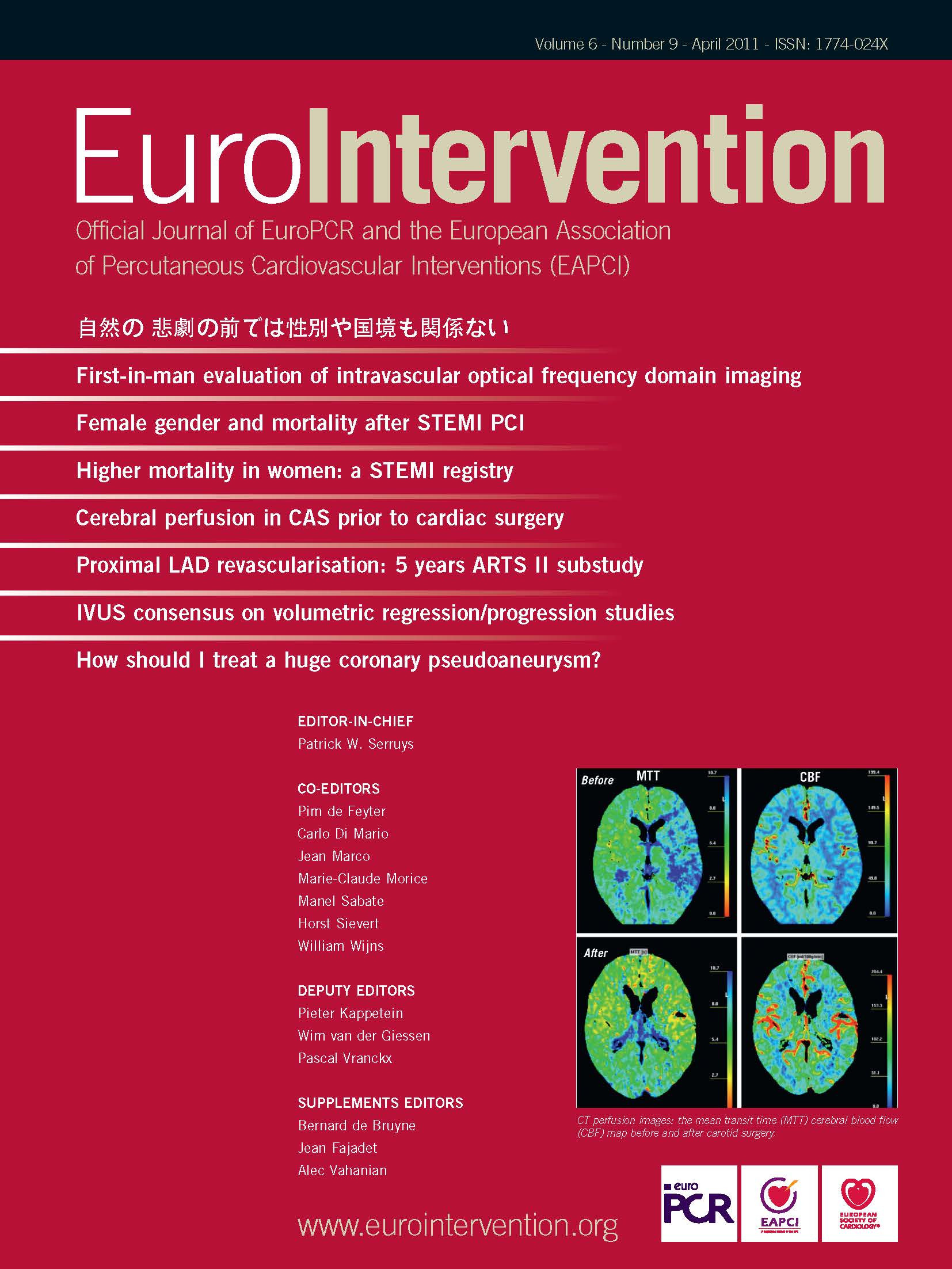Dear colleagues,
As we enter the spring we cannot forget the havoc with which the last season ended. It is with great humility and sorrow that we all watched the tragedy that beset Japan, and naturally our thoughts are with the countless Japanese colleagues we know so well...specialists and fellows, practitioners and researchers, all dedicated doctors and health professionals, whose well being, and continued dedication, can only fill us with tremendous respect.
We, like many of you, scrambled to get further information about those we know, and an informal communications system was created throughout the world, where dozens, if not thousands of specific international communities such as our own used everything within their means to seek out information on those living in Japan; sending out our electronic arms to search for – and embrace – our Japanese friends and family. We have heard many stories of privation, of their hardships and their loss, but also how many in the Japanese interventional community are at work in the stricken areas lending their expert hands and compassion.
We understand how privileged we are to be able to travel freely, to attend scientific sessions and symposiums, to openly discuss with our friends and colleagues and have learned, it is really no surprise, that many of the medical meetings and live demonstration courses have been voluntary postponed in Japan as many physicians and specialists are called in to the afflicted areas or brace themselves for a higher amount of transfer patients from hospitals in the devastated zones.
We offer our heartfelt encouragement to our Japanese colleagues as they work, often round the clock, and remain amazed at their resilience, respectful of their talent and dedication to their speciality and their fellow citizens. We can only wish them our very best in the coming months as they emerge from this trying moment.

In this issue of EuroIntervention
The relationship of gender to heart disease and cardiac care has been a fascinating and explosive issue for several decades now. The excellent editorial by Joseph M. Sweeny and Roxana Mehran from Mount Sinai Medical Center in New York, NY, USA point out the current state of the discussion in the interventional field, and offer an interesting introduction to the two papers in this edition of EuroIntervention dedicated to this subject. The first article, from France, is by Hakim Benamer et al, studying data from the greater Paris metropolitan area concerning female gender and mortality after STEMI PCI. Data from all PCIs performed in 42 centres has been entered into a mandatory registry which includes over 16,000 patients treated by PCI for STEMI <24 hours. While women comprise only ~22% of the population of the overall study, there are close to 4,000 women included here, and their analysis shows that female gender is associated with higher in-hospital mortality. This registry has important data in line with previously published papers. Marcin Sadowski et al present a Polish study looking at gender-related differences in mortality after ST-segment elevation MI. This too is a large multicentre national registry encompassing 456 hospitals –including 58 interventional centres– who participated in the registry during one year. The study group consisted of 8,989 (34.5%) females and 17,046 (65.5%) males with clinical outcomes revealing that the treatment of STEMI shows differences between men and women.
The safety and efficacy as well as the eventual discontinuation of clopidogrel are discussed in two excellent papers, which, coincidentally, were transfers from the European Heart Journal. Jonas Persson et al’s article considers whether there was a benefit from clopidogrel use in patients with acute coronary syndrome after PCI with stents. Coming out of the the famous SCAAR and RIKS-HIA registries, 27,972 patients were evaluated. This is a well-done analysis of triple antithrombotic therapy and the associated rates of ischaemic and bleeding events. While there are a number of similar analyses that have already been done, in the absence of randomised data, this analysis adds further to our understanding of the subject. The second paper, by Gilles Lemesle et al, presents a clopidogrel and rebound effect retrospective study which looked at MACE and the discontinuation of clopidogrel in two different time periods, considering events less than, and after 30 days, respectively.
Renal insufficiency following contrast media administration is a critical subject, and we present an article here on the design of the REMEDIAL II trial. Carlo Briguori, Gabriella Visconti, Bruno Ricciardellin, Gerolama Condorelli, on behalf of the REMEDIAL II investigators introduce this contrast-induced acute kidney injury study design using the RenalGuard™ system. First results were presented during the Late Breaking sessions at last month’s American College of Cardiology. While the combined prophylactic strategy of sodium bicarbonate plus N-acetylsyteine seems to be effective in preventing contrast induced acute kidney injury (CI-AKI) in patients at low-to-medium risk, in patients at high and very high risk, this rate is still high. It is in this subset of patients where the authors anticipate an advantage using a system such as the RenalGuard™.
Rounding out April’s issue of EuroIntervention we present a “How should I treat...” with Shinichi Furuichi presenting a challenging case: the treatment of a long and huge coronary pseudoaneurysm after spontaneous coronary artery dissection. Our guest invited Experts Manel Sabate and Adrian P. Banning give their opinions on how they would deal with this problem, before learning how the actual case had been resolved. In our practical Tools & Techniques section Gerald S. Werner introduces the antegrade recanalisation technique for chronic total coronary occlusions, with full data and detailed information online.
We trust you will find much of interest in this current edition of EuroIntervention and it is with great anticipation we look forward to seeing you at EuroPCR in Paris. There are all sorts of surprises and special editions that will be coming your way at that time, and we are eager to share them all with you. Please join us.
Acknowledgement
I am very grateful for the help of Yoshitaka Shiratori and Yoshinobu Onuma for the Japanese translation in this editorial.

